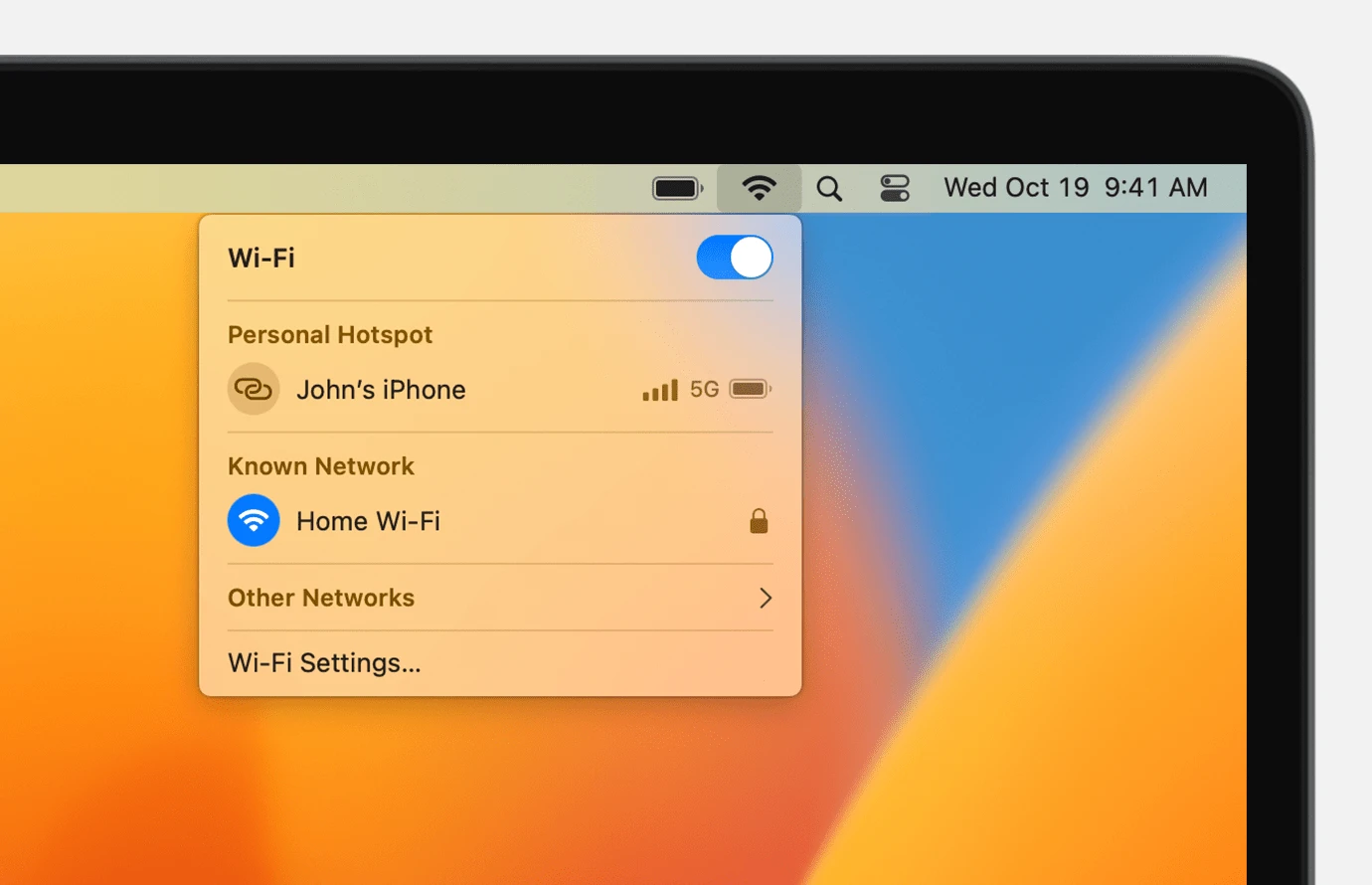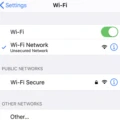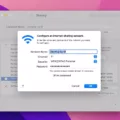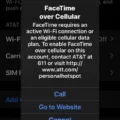If you’re experiencing issues with your Mac’s Wi-Fi and can’t seem to turn it on, there are several troubleshooting steps you can take to resolve the problem. In this article, we will explore some common reasons why Wi-Fi may not be turning on and provide detailed solutions to help you get your Mac connected again.
1. Restart the Router:
One of the first things you should try is restarting your router. Sometimes, the issue may lie with the router itself rather than your Mac. To do this, simply power off the router by disconnecting it from the power source for about 30 seconds. Then, plug it back in and turn it on again. This power cycle can help resolve any temporary glitches or connection issues.
2. Restart the Mac:
Another simple yet effective troubleshooting step is to restart your Mac. Just like any electronic device, a reboot can often resolve minor software issues and refresh the system. To do this, click on the Apple menu in the top-left corner of your screen, select “Restart,” and wait for your Mac to power back on. This may help reset any Wi-Fi settings that were causing the problem.
3. Check Flight Mode and Wi-Fi Settings:
It’s essential to ensure that your Mac is not in flight mode and that Wi-Fi is enabled in the settings. To check this, go to the Apple menu, select “System Preferences,” and click on “Network” in the sidebar. Make sure the Wi-Fi option is selected in the left pane. If it’s not, click on the lock icon at the bottom-left, enter your password, and enable the Wi-Fi option.
4. Remove Installed Profiles on Your Mac:
If your Mac won’t connect to Wi-Fi despite the network being available, it may be worth removing any installed profiles. To do this, go to the Apple menu, select “System Preferences,” and click on “Profiles” (Note: If you have no profiles installed, this option won’t be visible). Remove any unnecessary or conflicting profiles by selecting them and clicking the “-” button.
5. Delete Network Preferences Files:
If you’re still experiencing Wi-Fi connectivity issues on your Mac, you can try deleting the network preferences files. This step can help clear any corrupted or conflicting files that may be affecting your Wi-Fi connection. To do this, go to the Finder, click on “Go” in the menu bar, and select “Go to Folder.” Type in “~/Library/Preferences/SystemConfiguration/” and press Enter. Locate the files named “com.apple.airport.preferences.plist” and “NetworkInterfaces.plist,” and delete them. Empty the trash, restart your Mac, and check if the Wi-Fi issue persists.
By following these troubleshooting steps, you can hopefully resolve the issue of not being able to turn on Wi-Fi on your Mac. Remember to restart your router, restart your Mac, check flight mode and Wi-Fi settings, remove installed profiles if necessary, and delete network preferences files if all else fails. With these solutions, you should be able to get your Mac connected to Wi-Fi again and enjoy uninterrupted internet access.

Why Can’t I Turn On Wi-Fi On My Mac?
There could be several reasons why you are unable to turn on Wi-Fi on your Mac. Here are some possible causes along with their solutions:
1. Software issues:
– Check for any pending software updates for your Mac. Install them if available.
– Restart your Mac to refresh the system and clear any temporary glitches.
2. Wi-Fi settings:
– Make sure that the Wi-Fi is enabled in your Mac’s settings. Go to the Apple menu > System Preferences > Network. Ensure that the Wi-Fi option is selected and turned on.
– If the Wi-Fi option is grayed out, click on the lock icon at the bottom left corner and enter your admin password to make changes.
– Click on the Wi-Fi option, then click on the Advanced button. In the Wi-Fi tab, remove any preferred networks that you no longer use or that have connectivity issues. Then, reconnect to your desired network.
3. Airplane mode:
– Verify that your Mac is not in Airplane mode. You can check this by clicking on the Wi-Fi icon in the menu bar. If the Airplane mode is enabled, click on it to turn it off.
4. Hardware issues:
– Check if the Wi-Fi hardware switch on your Mac is turned on. Some Mac models have a physical switch or a function key combination to enable or disable Wi-Fi.
– Ensure that your Mac is within range of the Wi-Fi network and there are no physical obstructions that could interfere with the signal.
– Try connecting to a different Wi-Fi network to determine if the issue is specific to your current network.
5. Reset network settings:
– If none of the above solutions work, you can try resetting your Mac’s network settings. This will remove all saved network configurations and preferences. Go to Apple menu > System Preferences > Network, then click on the “Advanced” button. In the “Advanced” window, click on “Reset” and confirm the action.
If you have tried all these steps and are still unable to turn on Wi-Fi on your Mac, it is advisable to contact Apple support or visit an authorized service center for further assistance.
How Do I Turn My Wi-Fi Back On My Mac?
To turn on Wi-Fi on your Mac, follow these steps:
1. Click on the Apple menu located at the top-left corner of your screen.
2. From the drop-down menu, select “System Preferences”.
3. In the System Preferences window, click on “Network”.
4. The Network preferences window will open, showing a list of available network interfaces on the left-hand side.
5. Look for the “Wi-Fi” option in the list and click on it.
6. On the right-hand side of the window, make sure the checkbox next to “Wi-Fi” is selected. If it’s not selected, click on the checkbox to enable Wi-Fi.
7. Once Wi-Fi is enabled, you will see a list of available Wi-Fi networks in the left-hand pane.
8. Select the Wi-Fi network you want to connect to by clicking on its name.
9. If the network is password-protected, you will be prompted to enter the password. Type the password and click “Join” or “Connect” to connect to the network.
10. After successfully connecting to the Wi-Fi network, you should see a checkmark next to the Wi-Fi icon in the menu bar at the top-right corner of the screen.
That’s it! Your Wi-Fi is now turned on and connected to your Mac. You can now enjoy browsing the internet and using online services.
Why Won’t My Mac Connect To Wi-Fi But My Phone Will?
There could be several reasons why your Mac is unable to connect to Wi-Fi while your phone can. Here are some possible causes and solutions to try:
1. Network settings: Check if the Wi-Fi network you are trying to connect to is visible and available on your Mac. Go to the Wi-Fi menu in the menu bar (top right corner of the screen) and see if the network is listed. If not, try turning Wi-Fi off and on again, or restart your Mac.
2. Router issues: Restart your router by unplugging it from the power source, waiting for a few seconds, and then plugging it back in. This can help resolve any temporary network glitches. Additionally, ensure that your router firmware is up to date.
3. Network congestion: If you are in a crowded area with many Wi-Fi networks, there might be interference causing connectivity issues. Try changing the Wi-Fi channel on your router to a less congested one. You can usually access your router settings through a web browser by typing in the router’s IP address (check your router’s manual for instructions).
4. Network password: Double-check that you are entering the correct Wi-Fi password on your Mac. It’s possible that the password was changed or entered incorrectly.
5. Security software: Sometimes, security software or firewall settings on your Mac can interfere with Wi-Fi connections. Temporarily disable any third-party security software and check if the Wi-Fi connection works.
6. Network settings reset: Resetting your network settings on the Mac can help resolve any configuration issues. Go to “System Preferences” > “Network” and click on the Wi-Fi connection. Then click on the “Advanced” button and choose the “Reset” option. Note that this will remove any saved Wi-Fi networks and you’ll need to re-enter their passwords.
7. DNS issues: Try changing the DNS settings on your Mac. Go to “System Preferences” > “Network” > Wi-Fi > “Advanced” > “DNS” tab. Remove any existing DNS server addresses and add new ones such as Google DNS (8.8.8.8, 8.8.4.4) or OpenDNS (208.67.222.222, 208.67.220.220).
8. Network hardware problems: If none of the above solutions work, there might be an issue with your Mac’s Wi-Fi hardware. In this case, you may need to contact Apple Support or visit an authorized service center for further assistance.
It’s important to note that these are general troubleshooting steps, and the specific solution may vary depending on your Mac model and operating system version.
Conclusion
If you are experiencing issues with your Mac not connecting to WiFi, there are several steps you can take to troubleshoot the problem. First, try restarting both your router and your Mac to ensure that it is not a simple power issue. Additionally, check the settings on your Mac to make sure that WiFi is enabled and that it is not in flight mode.
If these basic steps do not resolve the issue, you may need to remove any installed profiles on your Mac. This can be done by going to the Network settings in System Preferences and clicking on the Profiles option. If there are no profiles installed, you can try deleting the network preferences files to see if that resolves the problem.
It is important to note that if your phone is able to connect to WiFi but your Mac is not, the issue may be specific to your Mac and not the router. In this case, performing the above steps should help to diagnose and resolve the problem.
Troubleshooting WiFi connectivity issues on a Mac can be a bit complex, but by following these steps and seeking further assistance if needed, you should be able to get your Mac back online and connected to the internet.







